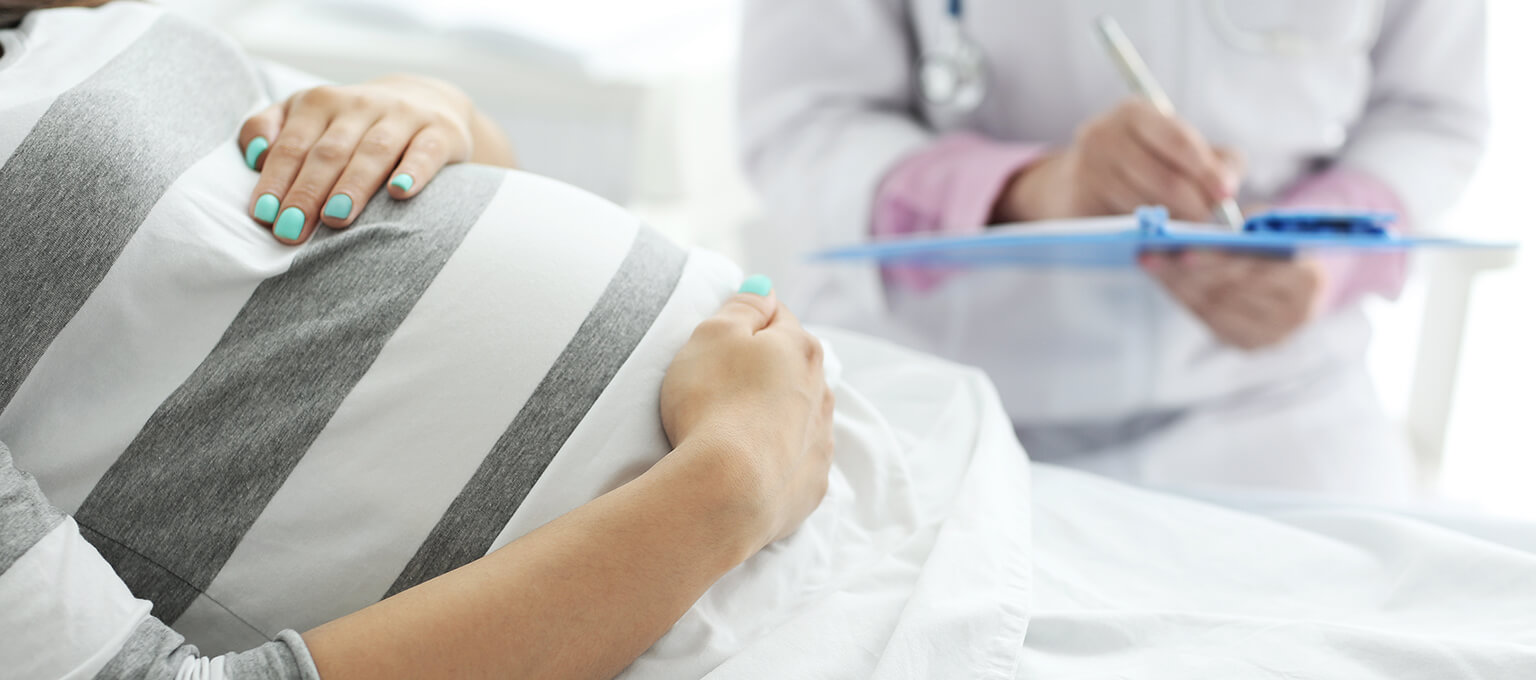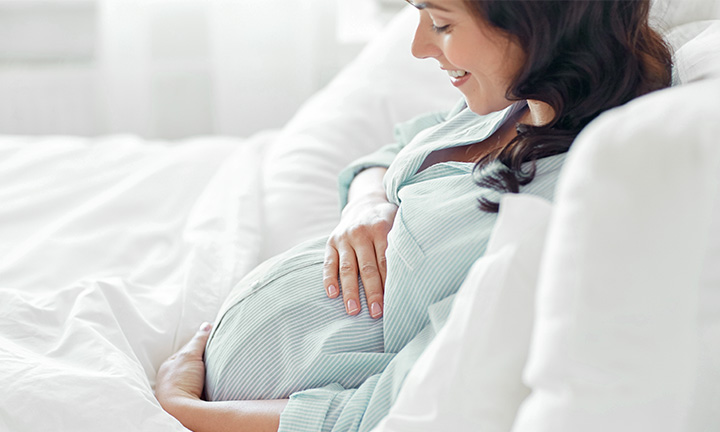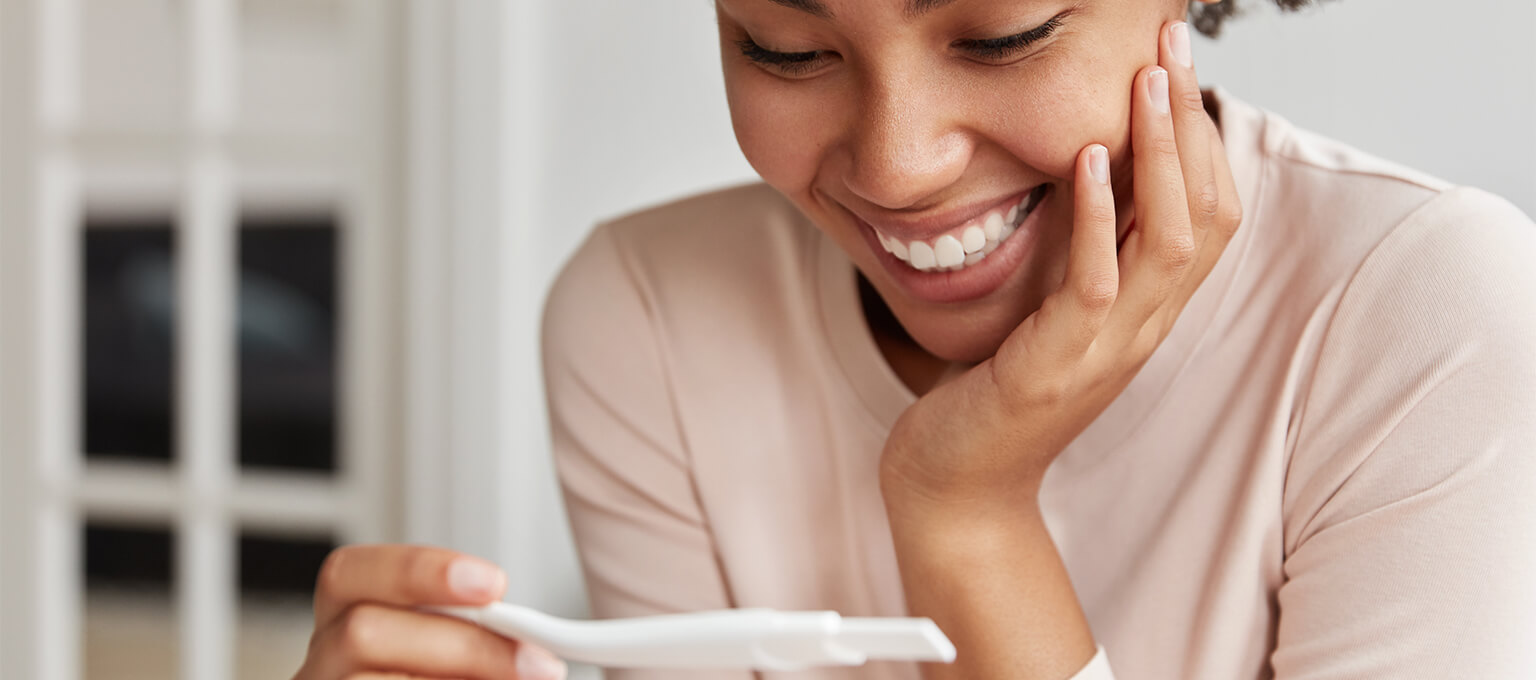
When Do You Start Showing?
One of the most highly anticipated pregnancy milestones is when that tiny baby bump becomes visible to you and others, revealing that you're expecting. So, it's normal to wonder, “When do you start showing?” as you go through the first exciting weeks and months of pregnancy. You've got a lot to plan for and accomplish, from deciding when to share your news and send out pregnancy announcements to buying maternity wear and going to all your checkups, and it helps to have as much information as possible. Read on to learn more about when you start showing in pregnancy.
When Do You Typically Start Showing in Pregnancy?
Every person and every pregnancy is different, so do remember that when you start showing, it might not be when others start showing and vice versa. Also, keep in mind that those early signs of pregnancy during your first two months don’t usually include a baby bump, even though your little one is developing rapidly.
If anything, you might feel a little bloated from hormonal changes during pregnancy, which could cause your tummy to feel bigger. But in your third month, you may start to notice your waist getting a little thicker. Still, others probably won’t be able to tell that you’re pregnant just yet.
During your pregnancy, the top of your uterus will push up as it expands out of your pelvic area, eventually leading to a visible baby bump. At around 12 weeks, the top of the uterus has grown to just above the pubic bone. So, does that mean you could start showing at 8, 9, or 10 weeks? Most likely, you won’t, but once your uterus expands even more and makes its way out of the pelvis, a tiny bump might start showing, even at 12 weeks pregnant. So, to wrap this up, when do pregnant women start showing? Though you might notice a small bulge earlier on, it’s more common to start showing in your second trimester. Some might notice it in month 4 of pregnancy or even in month 5, though others might see their baby bump a little earlier or later.
RELATED PREGNANCY TOOL
When Do You Start Showing With a First Pregnancy?
If you've just discovered you're pregnant, and this is your first pregnancy, you’re probably wondering when do first-time moms start showing. As mentioned above, with typical pregnancies, you might start to show in your fourth or fifth month, perhaps around 16 weeks to 20 weeks.
At around 20 weeks, your healthcare provider may start measuring your fundal height at each prenatal appointment. This is the distance from your public bone to the top of your uterus, called the fundus. Fundal height is one way your provider will gauge your baby’s growth, measuring it in centimeters. Most of the time, the number of centimeters roughly coincides with the week of pregnancy.
So, at 24 weeks pregnant, your fundal height would be close to 24 centimeters, give or take. Most pregnancies follow this pattern of fundal height measurement. In general, as the fundal height increases, so does the size of your baby bump.
When Do You Start Showing With a Second Pregnancy?
How soon do you show with a second pregnancy? If this is your second or a subsequent pregnancy, perhaps you’re eager to know if your baby bump will appear earlier or later this time around. The exciting news is that it’s possible to start showing earlier with a second pregnancy, given that the stomach muscles have already stretched and loosened once before.
When Do You Start Showing With Twins?
Now, when does someone start to show with a twin pregnancy or when having other multiples? Well, having two or more growing babies (along with placentas and amniotic fluid) causes your uterus to expand more quickly, meaning you'll likely show earlier than you would with one baby.
What Could Influence When and How You Start Showing During Pregnancy?
If you and your best friend had very different baby bumps during pregnancy (and if for both of you, this was your first baby, and you weren't carrying multiples), you might wonder why. A few factors can impact when and how you start showing.
Your size and body type. If you're thin and have a petite frame, your baby bump might pop out sooner. Larger, taller people could show a little later.
Fetal macrosomia. This condition refers to a larger-than-average fetus, one that’s in the top 10 percent of size at your stage of pregnancy. A bigger baby simply means the possibility of a bigger baby bump and one that could show a little earlier.
Why Show Earlier?
Are you asking yourself, “Why am I showing so early in my first pregnancy?” As mentioned above, there could be reasons that you might show earlier than others, such as the following:
It’s your second or subsequent pregnancy, so your stomach muscles have loosened and stretched before.
You have a more petite body frame.
Your baby is larger than average (fetal macrosomia).
You’re pregnant with twins, triplets, or other multiples.
Do any of these mean you can start showing at 6 or 7 weeks pregnant? Probably not, as that’s a little too early for most pregnancies. However, it’s not impossible to start showing at 13 weeks, for example, if you fall into one of the above categories.
Why Show Later?
Likewise, you can use the same rationale for why you might show later than others. Perhaps you’re taller or heavier, or your baby is smaller than average. And if this is your very first pregnancy and you’re not having multiples, it’s likely you’ll start showing in that fourth or fifth month of pregnancy.
Your healthcare provider is your best resource for any questions about your baby's development and how you’re doing as your pregnancy progresses, so don't hesitate to contact them.
Reasons for Not Showing During Pregnancy
You and your prenatal healthcare provider are a team, so your provider will work with you to monitor the progress of your pregnancy and your little one’s growth and development. Therefore, they’ll help you understand if your baby bump isn’t showing. Most likely, it’s absolutely nothing to worry about, as no two pregnancies are the same, and having a smaller bump is normal.
What to Do if You’re Not Ready to Share the News
When to reveal your pregnancy is totally up to you, but it’s no surprise that your baby bump will likely give it away sooner or later. If you’re not ready to share this type of personal news with the world, even as your bump starts to take shape, here are a few ways to conceal the growth:
Wear loose clothing. This is the most obvious trick. Hiding your baby bump is a lot easier when wearing baggier, looser clothing, like chunky sweaters, trendy ponchos, A-line dresses, and wide-leg pants or jumpsuits. Even the classic front tuck is a good choice to hide a rising baby bump.
Choose darker colors. Another tip in the wardrobe department is to opt for dark colors, as they tend to hide size better than lighter shades.
Know your angles. If you’re nervous about being photographed and someone seeing your baby bump, practice your angles in the mirror. If you position your body in a specific way, it might be harder to notice you’re showing.
Lay low. If you really want to conceal your pregnancy as your bump grows, consider staying out of the spotlight for a while, including social media.
When you are ready to share the news, consider our articles on pregnancy announcement ideas, how to tell your partner, and when to notify your boss and coworkers.
Progression of a Pregnant Belly
Here’s a sneak peek at what your baby bump might look like from month to month.
FAQS AT A GLANCE
When your belly “pops” during pregnancy may depend on a few different factors, as outlined in our article. However, it’s most common to start showing at 16 to 20 weeks pregnant.
The Bottom Line
When do you start showing in pregnancy? In which month of pregnancy does that beautiful tummy of yours come out? At how many weeks do you start showing? If you asked any of these questions or other similar inquiries, you’re in good company. Plenty of parents-to-be are extra excited to see their pregnancy journey in progress.
It’s difficult to pinpoint an exact day, week, or even month when that will happen for you, as every pregnancy is unique. But we do hope this article helped you get a better understanding of when to anticipate that bump appearing.
As you wait for baby bump’s arrival, check out our pregnancy milestones tracker for a fun way to follow your unique journey. And as you get ready for the big day, don’t forget to download the Pampers Rewards App, where you can snag discounts on diapers, something every baby needs.
- American College of Obstetricians and Gynecologists. Your Pregnancy and Childbirth: Month to Month, 7th ed. (Washington, DC: American College of Obstetricians and Gynecologists, 2021).
- Riley, Laura. You and Your Baby: Pregnancy, 2nd ed. (Hoboken, NJ: John Wiley & Sons, 2012).
- Cleveland Clinic. “Fetal Macrosomia.”
- Cleveland Clinic. “Twin Pregnancy.”
- Kaiser Permanente. “Learning About Twin Pregnancy.”
- Kaiser Permanente. “Your Pregnancy: Weeks 13 to 16.”
- John Hopkins Medicine. “The Second Trimester.”
- Mayo Clinic. “Pregnancy Week by Week.”
- Medline Plus. “Diastasis Recti.”
- Tommy’s. “How Does a Second Pregnancy Differ From the First?”
- Tommy’s. “My Bump Is Too Small.”
Read more about Pregnancy
Related Articles
Join a World of Support
through Pregnancy and Parenthood.
TRACK WITH TOOLS
LEARN WITH EXPERTS
GET REWARDED














